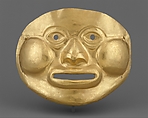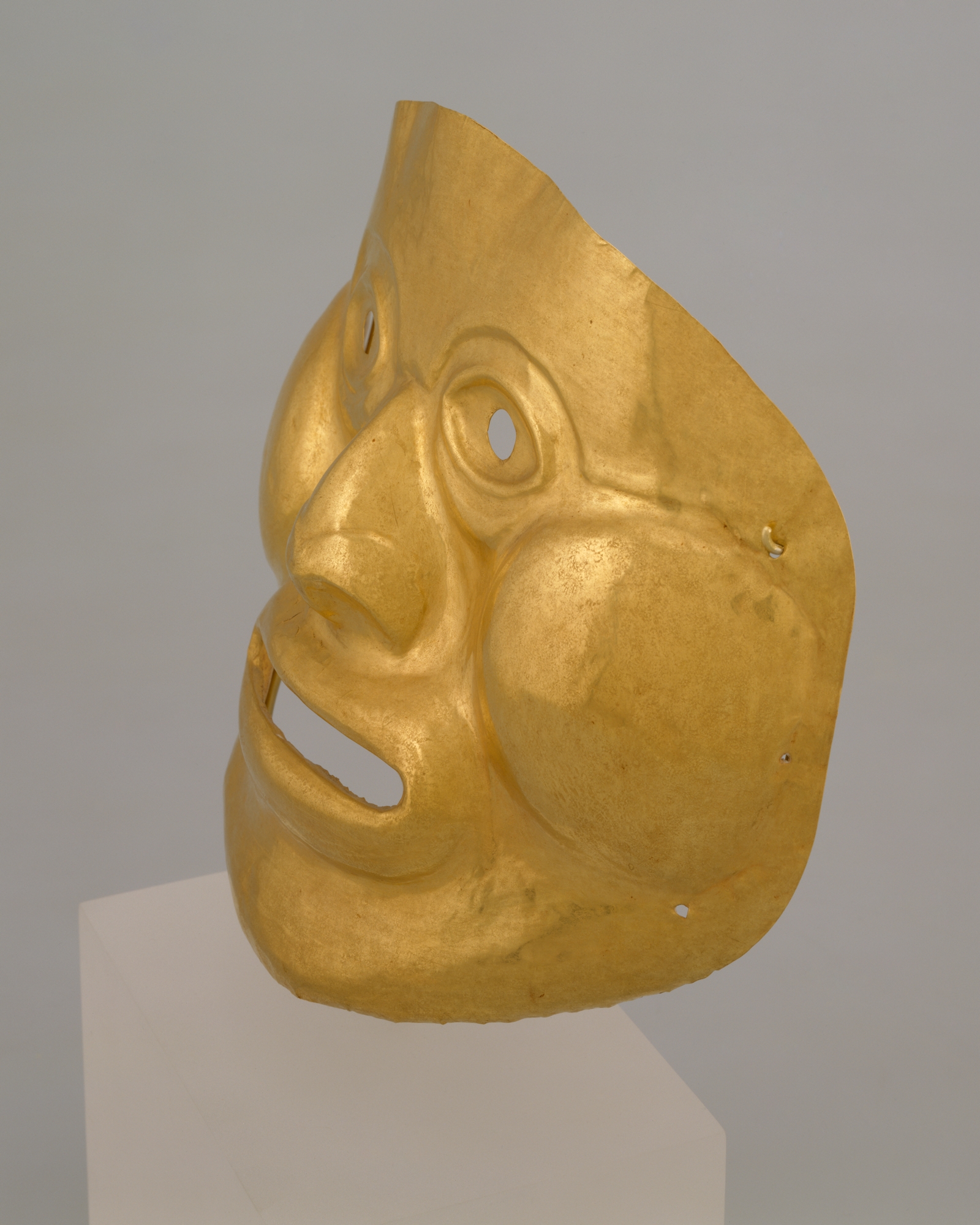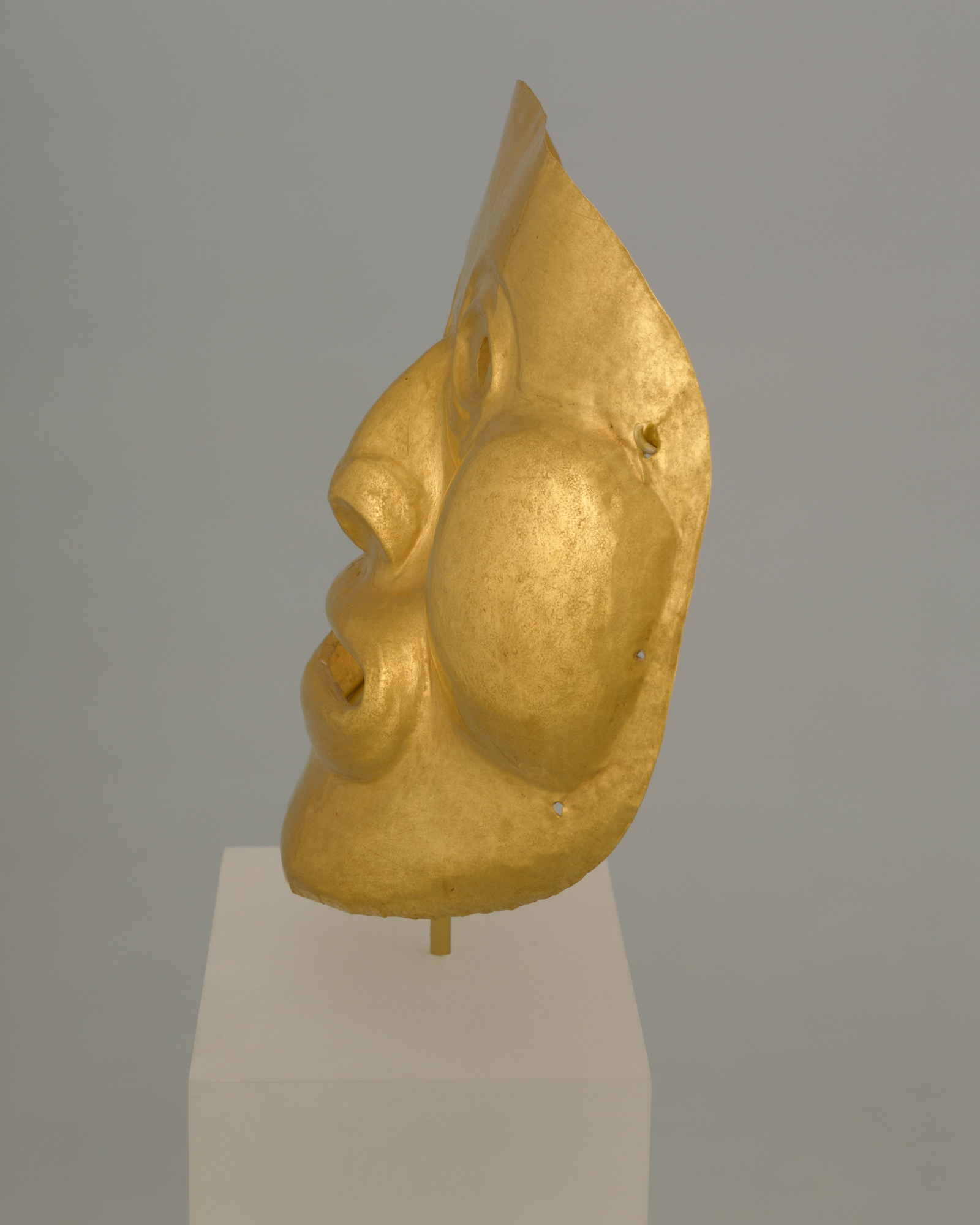Funerary Mask
Not on view
Lifesize hammered masks are the largest objects produced in gold in the ancient Americas. While most masks were presumably made as burial offerings, this example, with its pierced eyes, cutout mouth, and additional holes for tying at the sides, could have been worn by an individual during life in a ritual or ceremony before being placed with his material wealth in a tomb. The mask comes from the Calima River region in southwestern Colombia, where abundant alluvial gold deposits prompted a distinguished goldworking tradition that lasted for at least 2,000 years. Hammered from a single sheet of metal of high carat gold (its alloy contains 86 percent gold, 13 percent silver, and one percent copper), Calima masks of the Ilama era are often flat, with generic details of the human face. On this example, the features are individualized with puffy bags beneath the eyes, a broad nose with flared nostrils, big, round, bulging cheeks, and a fat-lipped open mouth.
Due to rights restrictions, this image cannot be enlarged, viewed at full screen, or downloaded.
This artwork is meant to be viewed from right to left. Scroll left to view more.





